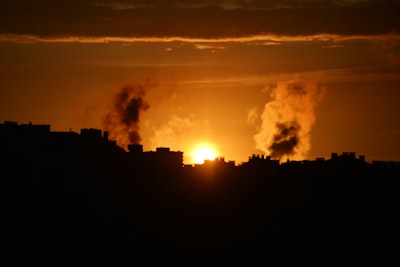Summary
Hamas has reportedly given a 'positive response' to mediators regarding a new Gaza ceasefire and hostage release proposal advanced by the US. While Hamas indicated willingness to negotiate, it also requested several amendments — such as US guarantees against resumed hostilities and changes in how humanitarian aid is distributed. Israel and the US have not publicly responded to these demands, and key disagreements remain, including over Israeli troop withdrawals and the future of hostilities if a permanent deal cannot be reached. The human impact on both Palestinians and Israelis remains acute: continued bombings in Gaza have led to heavy casualties, while the fate of hostages preoccupies Israeli society.
Analysis
The latest negotiations highlight the persistent complexity and brutality of the conflict. The proposal seems to reflect the international community’s urgent desire for a ceasefire, yet the details remain deeply contested. Hamas’s requests for US guarantees and UN-managed aid distribution reflect mistrust of both Israel's and the US’s roles, particularly given hostile environments during previous ceasefires and alleged failings in humanitarian aid delivery.
The speech by US President Trump (distinct from Biden, suggesting either a hypothetical future or reporting error) reveals political pressures from all sides: the demand that Hamas accept the current deal or face worse consequences places the group in a corner, while Israel’s position—insisting the war will not end until hostages are released and Hamas is dismantled—underscores its own red lines.
Narratives about aid and civilian casualties are contested: Israeli authorities deny large-scale incidents near aid sites, while UN and NGO figures describe deadly violence as people try to access basic provisions. Both sides use these stories to frame the other as aggressor or obstructer. In this media landscape, the deaths and appeals of ordinary civilians—like bereaved Gazans and hostage families—highlight the immense human cost often buried under strategic and political rhetoric.
Discussion
The situation shows how deeply humanitarian, political, and psychological wounds fuel the cycle of violence and reinforce intransigence. Even when parties express willingness to talk, the fundamental distrust, the trauma of recent months, and zero-sum narratives make compromise elusive. The international framing—demands for US guarantees, arguments over who should distribute aid—reflects both the collapse of local trust and the geopolitical anxieties bound up in the conflict.
Questions worth exploring include: Can an outside power realistically guarantee peace if negotiations fail? Will the growing toll on civilian life force either side’s hand toward compromise, or deepen strategic resolve? Are there lessons in past ceasefires, which have repeatedly failed to bring lasting security?
Moreover, the diverging perceptions of legitimacy—who is credible, who is speaking for the people, whose suffering is spotlighted—fuel further mutual dehumanization. The focus on hostages in Israeli discourse, and on civilian casualties and deprivation in Gaza, demonstrates how each society’s pain is foregrounded within its own context, complicating empathy and resolution.
Ultimately, this episode is another painful chapter in a conflict that continues to devastate ordinary lives, test the limits of diplomacy, and raise urgent ethical questions about war, memory, and accountability. Whether current negotiations can break the cycle of distrust remains uncertain—but the human stakes could hardly be higher.

Comments
No comments yet. Be the first to comment!